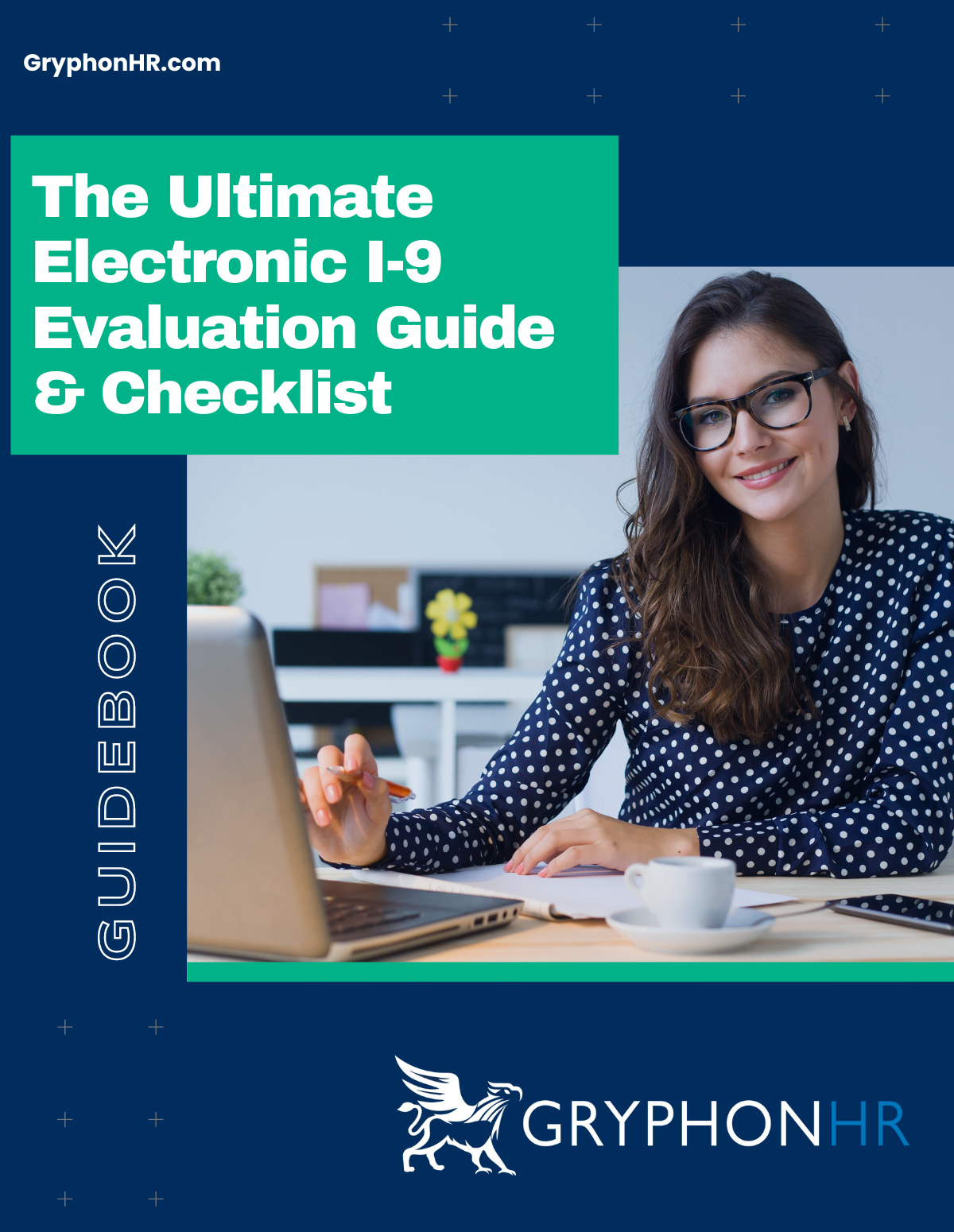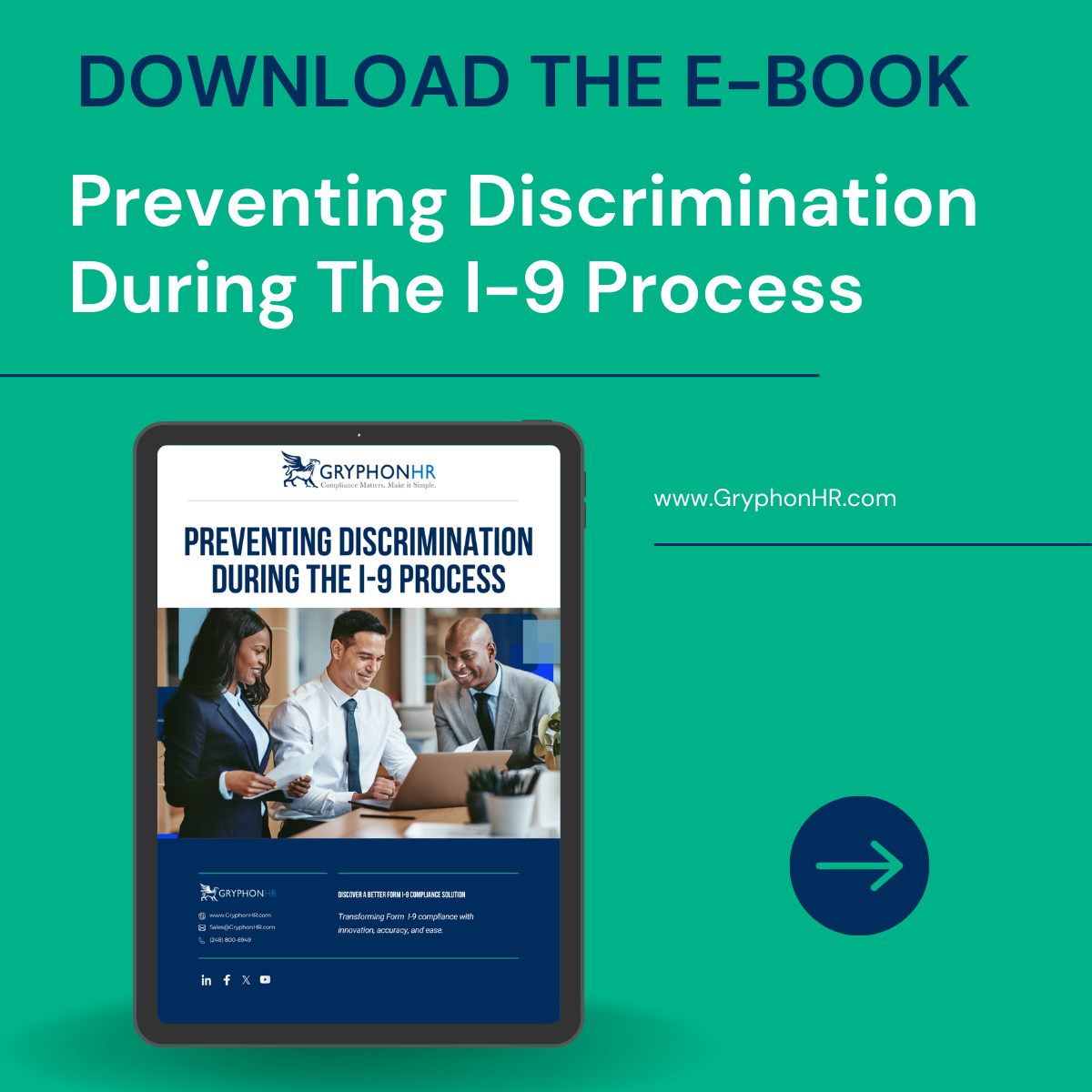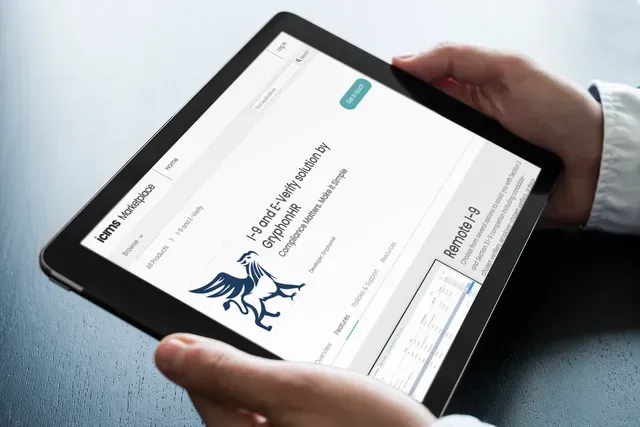Authored By: GryphonHR Blog Contributor
GryphonHR blog contributors include , consultants, researchers, and other subject-matter experts who’ve written content for our blog.
June 14, 2023
The Department of Justice (DOJ) recently reached a settlement agreement with two organizations that were found to have discriminated against employees during the employment eligibility process.
On June 13, 2023, the DOJ announced a settlement with a Colorado-based staffing company after finding the company discriminated against non-citizens of the U.S. when checking their legal permission to work in the United States.
The department launched an investigation following a complaint from a newly employed non-U.S. citizen. The individual reported that the staffing company demanded a foreign passport as proof of work authorization, despite the employee having already provided adequate documentation. Additionally, the department discovered that the Colorado Springs office had a recurring practice of requesting specific non-U.S. citizens to present their immigration documents, even if they had already submitted other valid forms of documentation. As a result of the investigation, the department concluded that several non-U.S. citizens, including the complainant, had been subjected to this practice.
“While employers must verify every new hire’s permission to work in the United States, they can’t require unnecessary documents or discriminate based on someone’s citizenship status or national origin in the process. The Civil Rights Division will continue to fight to remove discriminatory barriers to employment.”, stated Assistant Attorney General Kristen Clarke of the Justice Department’s Civil Rights Division.
The Immigrant and Employee Rights Section (IER) of the DOJ is tasked with enforcing the anti-discrimination provision of the Immigration and Nationality Act (INA). One of the key aspects of this provision is its prohibition of discrimination in various employment-related activities such as hiring, firing, recruitment, and referral for a fee, based on citizenship status and national origin. Additionally, the INA addresses unfair practices concerning documentary requirements, as well as retaliation and intimidation.
According to the Immigration and Nationality Act (INA) and Form I-9 and E-Verify policies, employers may not require more documents than necessary to verify identification or work authorization and cannot request specific documentation as part of the employment eligibility process.
Employers should follow the guidelines set forth for proper document practices.
Under the terms of the settlement, the staffing agency will have to pay civil penalties to the United States and will be subject to monitoring by the DOJ for three years. They will also be required to train staff on the INA’s anti-discrimination provision and review and revise their employment policies before the company or any of its subsidiaries can hire employees during the monitoring period.
On June 8,2023 the DOJ announced a settlement reached with a pizza franchise company over discriminatory practices during Form I-9 and E-Verify procedures. An investigation was initiated after the former employee filed a complaint with the Employee and Immigration Rights division of DOJ. The Justice Department determined that the franchise company violated the Immigration and Nationality Act by requesting more documents than legally required to prove work authorization from a non-U.S. citizen during the onboarding process.
The former employe filed a complaint after the employer rejected valid acceptable documents to complete the Form I-9 and specifically requested to see a Green Card for its E-Verify inquiry. These actions by the employer violate the INA and are considered discriminatory practices.
Under Federal law employees are allowed to choose which valid, legally acceptable documents to present to prove their identity and permission to work, regardless of citizenship, immigration status or national origin.
Employers should never request specific documents from an employee for the purpose of identification and work authorization verification related to Form I-9 and E-Verify procedures. A copy of the most current version of the Form I-9 Lists of Acceptable Documents should be presented to the employee, and the employee should then choose which of the acceptable documents to present.
Under the settlement agreement the employer is required to pay a civil penalty to the United States. The company is also required to train its human resources staff on the INA’s requirements, revise its employment policies, and be subject to departmental monitoring and reporting requirements.
An increasing trend of settlements reached by the Department of Justice for discrimination during the hiring process is expected to continue. Employers should take their onboarding practices seriously, especially when it comes to compliance with new hire legal requirements. The fines reached in the two settlement agreements discussed in this blog are seemingly minimal, however, some companies have received significant fines for violating the INA’s anti-discrimination provision, with hundreds of thousands of dollars in civil monetary penalties assessed by the DOJ. Employers can visit IER's website for more information on how to avoid discrimination during the document review and verification process.
Contact us to learn more about how GryphonHR provides compliance features that will assist you to ensure proper documentation and consistent procedures.
Sign-up for our newsletter or
follow us on Google News to stay up to date with Form I-9 and E-Verify information.

Authored By: GryphonHR Blog Contributor
GryphonHR blog contributors include , consultants, researchers, and other subject-matter experts who’ve written content for our blog.
Stay updated on Form I-9 and E-Verify!


Is your I-9 compliance software placing you at risk? Learn more about the compliance requirements for electronic I-9 systems and how to evaluate important features. Skip the form and download this interactive guide!

Avoiding discrimination during the Form I-9 process is critical to preventing liability, hefty fines, and unfair hiring practices. Download our free e-book to learn more.



MENU
STAY CONNECTED
Join our newsletter to learn more about Form I-9.